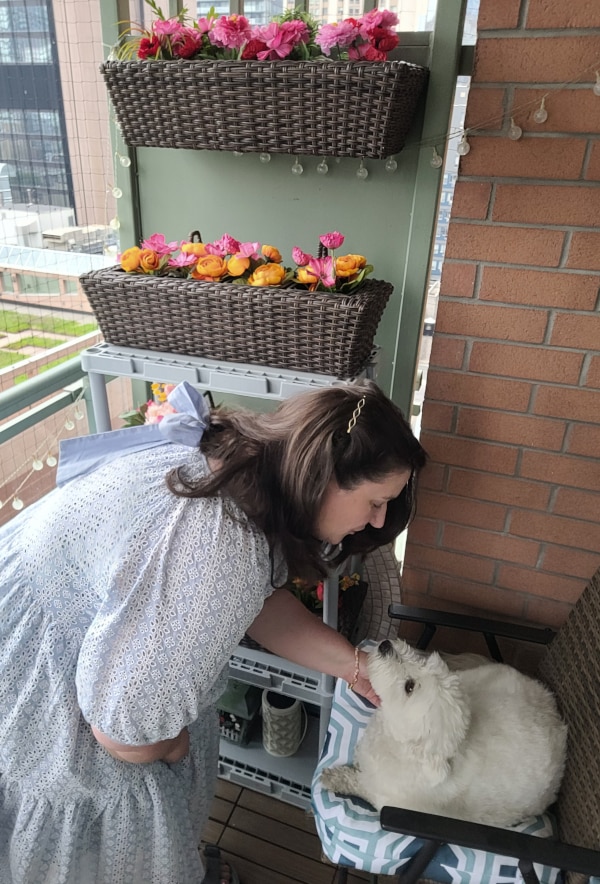Kristy received compensation from Coloplast to provide this information. Each person’s situation is unique so your experience may not be the same.
I remember being in elementary school, sitting cross-legged on the floor in the library for story time, with a horribly sore stomach. I would look around at the other kids in my class, wondering if anyone else ever felt as bad as I did right then.
It took a few years for me to tell my parents that something was wrong. As a young child all I knew was that bloody stools and sore tummies were “normal” for me. I was 10 years old when I spoke up, shared what was happening to my parents, and was then diagnosed with ulcerative colitis.
In the 1990s there were not a lot of options, approved for children, to treat colitis. Over the next 5 years I was in a near constant flare and was pretty miserable. Steroids, hospitalizations, missing school… I was pretty much at the end of what could be offered.
That ileostomy saved my life.
At the age of 15, five years after I was diagnosed, I received my first temporary ileostomy while I underwent a set of surgeries to remove my colon and rectum and build a pelvic pouch.
That ileostomy saved my life. I had a wonderful NSWOCC at the hospital who spent time teaching me how to change my ostomy, and I was so relieved that I would no longer have to clench my bottom to avoid accidents. I could go back to school and enjoy all the things that high school had to offer, and I could keep up with my friends.
However, this didn’t last too long. I was soon diagnosed with pouchitis and over the next 17 years would soon come to have issues with my pelvic pouch, finding myself back on medications, having to say no to social activities, and asking myself if this was how I wanted to spend the rest of my life.
The answer was, absolutely not!
I met with my colorectal surgeon, and we scheduled surgery to remove my pelvic pouch, close up my bottom (affectionately known as barbie butt) and receive a permanent ileostomy. If the first ileostomy saved my life, the second one gave me quality of life.

It takes lots of trial and error to find an ostomy system that works for you.
Since 2013 I have travelled more, eaten more variety in foods, and been able to say yes to more things than I ever thought I would be able to.
Things are not always easy, I have had my share of ups and downs, and when I say downs, I mean the way downs. As down as someone can get. But, with the help of my Mom and Dad, sisters, close family and friends, I became the little engine that could. They never let me give up and my parents would always tell me to never lose hope.
Having an ostomy doesn’t get rid my habits of always looking to see where the bathrooms are, checking a restaurant menu ahead of time, of wondering if and when I will need surgery next to deal with adhesions or other unexpected health issues.
Having an ostomy doesn’t automatically make me at peace with my body, my health - all of this takes work. And it takes lots of trial and error to find an ostomy system that works for you.
Coloplast has been with me since the beginning. I used the Assura line with my temporary ileostomy, and then the SenSura® line with my permanent ostomy. The past few years I have been using the Mio, which has been a game changer in my peristomal skin health, and in how I mentally view myself and my body when looking in the mirror.
The Mio flange itself is extremely flexible - even the light convex flange that I use.
The grey colour of the bag looks less like a medical device than beige, and I reach for the Brava® Elastic Barrier Strips when travelling, swimming, or doing other activities where I want a little extra support.
And so, as someone who has lived without her colon for almost 30 years, my advice to you is to never give up and never lose hope. Reach out to Coloplast, to family, friends - the more we all talk and share our stories, the more we can normalize ostomies of all kinds.
